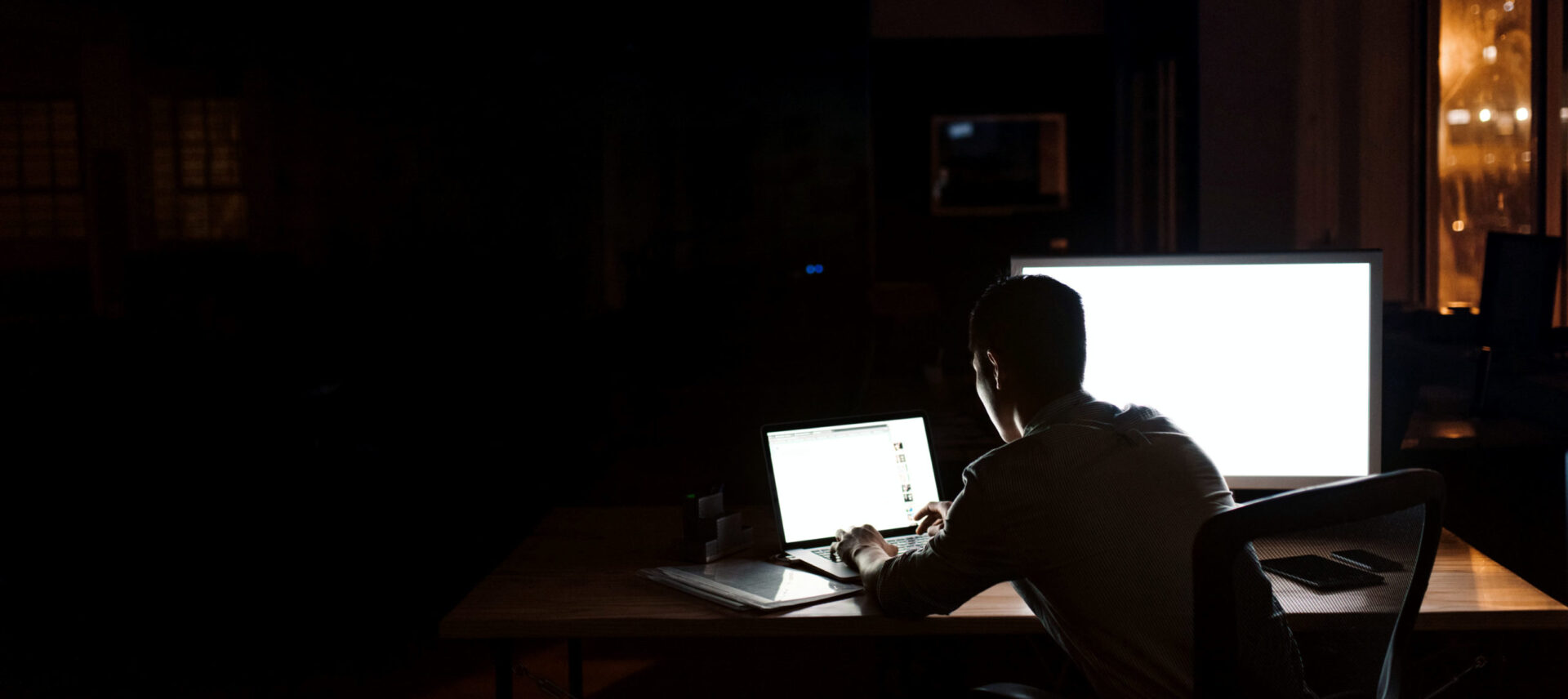
Article
The Introvert’s Approach to Design and Product Development
Introverted designers may seem out of place in a collaborative world of product development, but learn how the quiet ones can truly strengthen your strategic process.
When I work from the office, I like to be the first one there if I can help it. After I unlock the door and turn off the alarm, I breeze past the bank of light switches and go straight to my desk, where I turn on my task lamp and my computer. For as long as it lasts, nothing exists except for what’s happening within that little glowing bubble. It’s a temporary space where it’s okay to have tunnel vision and tune everything else out. I can be alone with my thoughts and finally focus.
That short period of time is what I need to charge myself up for a long day of problem solving. I’ve caught some grief over the years for this habit – people say it’s like I’m working in a cave. But honestly, I’d work that way all day if I could. But it never crossed my mind to ask myself why.
I’ve always known I was an introvert, but I never made a correlation between my social behavior and my work until I read Susan Cain’s book “Quiet.” The main theme is the transition from a culture of character to a culture of personality, and how the “extrovert ideal” dominates while introversion is viewed as inferior. She also discusses creativity and workplace culture as they pertain to introverts.
There is an unspoken pressure in the design world to become the next “rock star” designer. The implied career path is to start your own studio, get your name on a bunch of famous products, and become internationally recognized. Sometimes you get the feeling that becoming anything less than the outspoken super designer equals failure. As my career progressed I thought I would strive to achieve those standards of success. However, the thought of being that person always made me uneasy. Cain’s book helped me understand how my introversion played a role in that uneasiness, as well as all of the other ways it manifests in my life – like my work-in-the-dark habit.
As I started to look beyond my personal experience, I made new connections between the concept of introversion and the fields of design and product development (PD). I understood how introverts can be successful in creative fields, and how PD firms can sometimes behave like introverts. I saw that M3 Design places high value on traits typically associated with introversion, and that it even influences the way we work (whether we realize it or not).
Why introverts are particularly suited for design and product development
Cain boils the distinction between extroverts and introverts down to who does best with external stimulation, and how much of it. Extroverts tend to draw energy from more external stimulation, while introverts tend to prefer quieter, more minimally stimulating environments. No one is 100% introvert or extrovert – we all fall somewhere on a spectrum.
Introverts have the ability to dive inward and focus intently on the task at hand. This is an extremely valuable skill in the product development field. With each passing day, the problems designers and engineers are tasked with solving become increasingly complex thanks to technological progression, new industry regulations, social changes, and rapidly shifting trends. Creating solutions for these types of problems simply can’t be achieved without deep focus – the kind of activity that introverts are specially tuned for.
If you were asked to do a word association for “design,” the word “brainstorm” would surely be one of the top answers. The image of the star designer leading an inspired session is a website staple. For this reason, design (and product development in general) has gained a reputation as a gregarious, outgoing field where constant collaboration is the norm. The problem is that brainstorms are generally only good for creating the seed of an idea. Rarely is the solution complete after a few hours of scribbling on sticky notes.
The real work occurs when those starter ideas can be developed independently or in a tight-knit group. This independent time is what enables the type of deep thinking that facilitates problem solving. And when we zoom out and look at the product development field as a whole, isn’t problem solving the central tenet that ties everything together?
How (some) PD firms work like introverts
The misconception that designers are all extroverts logically extends to the perception of product development firms. After all, firms like M3 typically work with many different clients requiring them to have the social skills associated with extroverts. They rely on self-promotion to gain new business. They project the collaborative spirit that has allowed design thinking (gag) to permeate so many industries. Sounds pretty extroverted on the surface.
However, if we take a step back and look at the types of projects we often work on at M3 and the way we work with our clients, there are some visible introverted tendencies.
Consulting firms generally operate outside of the overstimulating corporate environments where many of our projects originate. We’re not subjected to all of the different cooks in the kitchen. Once the kickoff and strategy sessions are over, there is a critical separation that allows space to innovate. And this space is why our clients come to us in the first place – we have the skill-set to solve their most complex issues and enough separation to do so.
To revisit the brainstorming example, you can find analogies that illustrate the introverted tendencies of PD firms. Substitute “concept review” for “brainstorm,” and you have an accurate description of our working relationship with our clients. We have regular check-ins to keep things on track and get necessary approvals, but otherwise we’re off quietly and diligently working independently.
How do introverted tendencies influence our design process?
I’ve sat in on many “innovation sessions,” and as an introvert and professional in the field I personally feel that they provide limited value. Those who don’t want to participate are generally able to not participate (and I empathize with them). People who crave group settings feel like they’ve been heard. But is the quality of the ideas actually greater? In a sense, the purpose of the exercise is the act of going through the motions of the process – and more importantly the optics of being seen to go through the process. The extroverts collect their energy from attempting to collaborate with the larger group, and the rest move on.
In the event that we hold a day-long or multi-day workshop at M3, it serves as an in-depth information transfer. We spend our time drilling down on the details. Agendas commonly include introvert-leaning activities like understanding stakeholders and their needs, adding depth to product and user journey maps, and establishing criteria for project success. Near the end of the day, we may have a small amount of time allotted to brainstorming with our clients. Why? Our clients hire us for our unique viewpoint and ability to generate new and unexpected ideas. Of course they probably have some ideas on the back-burner, but why would we expect them to do the work they’ve hired us to perform?
Our subtly introverted tendencies manifest in other ways. From an office layout perspective, I’ve occasionally encountered folks who are surprised to see we still have many walls up around the studio. The expectation is the long table with glistening Macs back-to-back and a stand-up meeting occurring in the background. In other words, an extrovert’s dream.
The reality is that we work on complicated projects that require intense focus. In the case of our medical and industrial clients, one mistake can even mean life or death. If I’m drumming on my desk or throwing a CAD-crash-tantrum, my neighbor can’t achieve the necessary level of deep focus if there’s not something to separate us. Those walls fill the introverted need to reduce or eliminate external stimulation and concentrate on the task at hand.
Why do we value introversion, even if we don’t go out of our way to highlight it?
One of the things we often discuss with potential candidates for our team is how much we value a lack of ego (i.e. it’s about the success of the group, not the individual). And before we get mixed up, having a big ego doesn’t necessarily correlate to being either extroverted or introverted.
Regardless of the terminology we use, what we’re trying to communicate is the value we place on hard work for the benefit of our clients and M3 as a whole. If our work is noticed, it should be for clever problem solving, achieving a specific business goal, or the general quality of output. All of these characteristics revolve around focusing on the task set before us: to fulfill our clients’ needs.
What we do not value is imposing our will on our clients in order to create blog-worthy projects. We do not go into projects with self-promotion in mind. The only value we place on external validation is growing our relationships with our clients and occasionally finding new ones.
Finally, as consultants we generally don’t own the work at the end of the day. For the members of our team, it simply doesn’t make sense to draw energy from being viewed as the individual visionary or mastermind behind a project.
Designers, embrace your inner introvert
Whether it’s in your personal or professional life, taking a hard look in the mirror isn’t always pleasant. It’s important to first understand, then recognize how your inherent personality traits influence your behaviors in all aspects of life. There is always room for personal growth, but that doesn’t mean you have to train yourself to act in a way that’s counter to your nature. If you’re an extrovert, be an extrovert. If you’re an introvert, be an introvert. There are many introverted qualities that dovetail nicely with the requirements of working in design and product development. Embrace these strengths, and don’t apologize for them. Don’t feel pressured to become the next rock star designer – at M3 we don’t.





